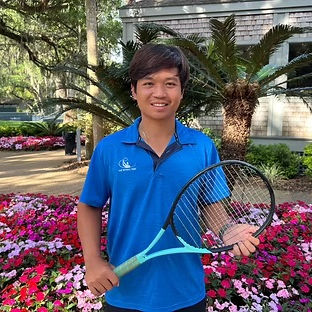The Do's and Don'ts of Poaching
- CDT Staff
- Sep 12
- 2 min read
Poaching is one of the most exciting and effective plays in doubles tennis. When executed well, it can instantly turn defense into offense, put pressure on your opponents, and help your team take control of the point. But timing and technique are everything. If done poorly, a poach can leave your side of the court wide open.

We asked Thien Nguyen, the Adult Program Director at the Omni Amelia Island Resort in Florida, to share his key do’s and don’ts of poaching. Before coaching, Thien had an exceptional career as a junior and professional player, earning victories over Nick Kyrgios, Daniil Medvedev, and Cameron Norrie. He earned his first ATP point at just 15 years old. His insights will help you to control your next doubles match and take home the victory!
Basic Rules of Poaching
Three key elements to successful poaching are communication, timing, and commitment. Communication with your partner is crucial. Agree with your partner beforehand on when you’ll poach (hand signals, nods, or verbal cues); without this, poaching can lead to confusion and leave big gaps on the court for your opponent to attack.

Timing your move correctly is also very important. Start crossing just after the opponent begins their swing, so they can’t easily adjust. If you start crossing too soon, the opponent will see it and just hit behind you.
Once you commit to a poach, hesitation is your worst enemy. A half-poach leaves you stranded in no man’s land with no court covered. Mixing real poaches with “fake poaches” is a smart way to stay unpredictable, but make that choice before the point starts. Getting caught in between will only give your opponents the advantage.
Here are a few more do’s and don’ts to keep in mind:
Don’ts
Don’t poach on a bad ball – If your partner’s shot is short or shaky, it’s usually smarter to hold your ground.
Don’t stand tall – Flat feet and straight legs make you slow. Stay low, light on your toes, and ready to move.
Don’t play it too safe – A soft volley down the middle gives opponents time. Go for depth, sharp angles, or body shots to apply pressure.
Do’s
Poach off strong setups – Look for chances after your partner hits a deep serve or solid groundstroke that forces a weaker return.
Close the net – Step forward as you cross so you cut off angles and make your volleys easier.
Target smartly – Send volleys into the open court, at the opponent’s body, or with a sharp angle to finish the point.

The next time you step on the doubles court, keep these do’s and don’ts in mind. Talk with your partner, trust your instincts, and commit fully to your move. Remember the golden rule: be unpredictable but coordinated. When you surprise your opponents while staying connected with your partner, poaching becomes one of the most powerful weapons in your doubles game.

I recently used some of these poaching tips during a friendly doubles match, and it completely changed our game. The emphasis on communication and timing really helped my partner and me dominate the net. It reminded me how crucial strategy and teamwork are whether in tennis or studying for exams. Just like in tennis, if you need a little extra help preparing, you can always pay someone to take GMAT for you and focus on your strengths.